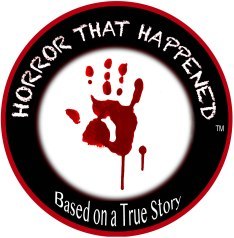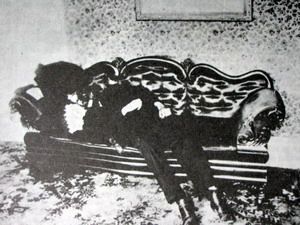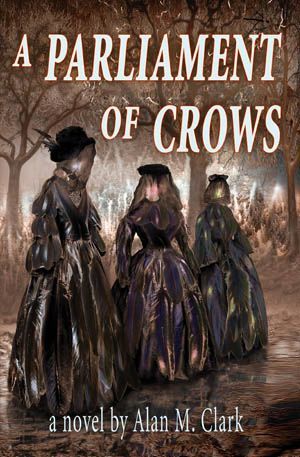Elizabeth Engstrom's Blog, page 2
November 30, 2021
The Itinerant
This is what I really did during 2020, the Year of Covid. I wrote a book.
This is a post-apocalyptic story. I know, I’ve been told, we’re over post-apocalyptic books. We’re post-post-apocalyptic. But I like to think this one is a little different. (Is that what every author says? Yes, I’m sure, and it’s true.) This book is about ways to think about rebuilding society after the apocalypse.

What’s important in society? What’s acceptable? What’s not? If we’re given a clean slate, how to we reorganize? Do we do what we have always done, or do we do something completely different? How do we take what is innately human and capitalize on those strengths?
These are questions worth pondering, and you don’t need to read my book to spend some time thinking about it. We also don’t need a clean slate to begin to reorganize. We just have to think about it, and then do what is right.
But if you want a story of a teenage kid trying to eke out a living for himself and his little sister in a lawless non-society to help you start to think about these things, this book might be just the thing.
If you read it, and you like it, please post a review on Goodreads or Amazon. It helps.
November 24, 2021
I’m still here
Oh, boy.
It’s been a long time since I’ve been here.
Covid happened. It happened to me, although not officially. I was sick early in the pandemic, and it wasn’t until I was over it that I realized what had happened. I am still coughing, almost two years later.
There was much activity in my professional life since I was here last.
Valancourt published a new Paperbacks from Hell edition of When Darkness Loves Us.

Then they published a new Paperbacks from Hell edition of Black Ambrosia.

Then they published a new hardcover edition of Nightmare Flower.

This is an amazing publisher who brings old horror reprints from the dustbins and introduces them to a brand new generation of fans. They are a delight to work with, and their Valancourt Book of World Horror Stories, vols. 1 and 2 are fantastic.
And then… A producer/director from New Zealand picked up the film rights to When Darkness Loves Us. James Ashcroft’s dark and mesmerizing thriller Coming Home in the Dark debuted at Sundance last year and is now available on Demand. It should premiere on Netflix in January. Don’t miss it.
So I’m still here, feeling grateful on this Thanksgiving eve, with new news to share soon.
November 15, 2019
Melanoma #5
Those of you who know me, or have followed this blog, know that my husband and I have had recurring melanomas. I started it, with a melanoma (stage 1, .9mm) on my ankle in June, 2003. That followed with one on my shoulder (stage 1, .8 mm) in 2013.
My husband has Parkinson’s, and astonishing as it may sound, those with Parkinson’s are 4-7 times more likely to have melanoma. His first was on the back of his neck (stage 1, .2mm) in 2015. Another followed in his ear (stage 1, .2mm) in 2018. This year, it was on his face.
WARNING! GRAPHIC SURGICAL PHOTOS FOLLOW!!
I post these photos and these blogs because when I was first diagnosed, I obsessively looked at photos of melanomas on the internet. Turns out, it was a good thing I educated myself like that, because I found the one on my shoulder, and all three of my husband’s. Well, I didn’t like the look of them, so flagged them for his annual dermatologist visit. It is in that spirit that I post the following pictures of Al’s most recent diagnosis and surgery, because melanoma is a real thing. It is deadly, and you (every one of you) ought to have a thorough, annual skin check by a dermatologist. Just in case.
[image error]
Melanoma next to right eye
This was the melanoma as of January, 2019. I had seen it, and photographed it the previous year, because I didn’t like the look of it. (Just so I don’t run to the dermatologist every other day, when I see something weird, I photograph it and put it on my calendar to photograph again six weeks later, for comparison. Most things have resolved by then. This got darker and a little larger.) The dermatologist at the VA initially said it was nothing. A year later, I insisted he look at it again, and he scraped it for a biopsy. A scrape should never be done on a suspected melanoma. A punch biopsy is what’s called for, so just in case it is a melanoma, we can get an accurate depth of the tumor. Still, he scraped, so we have no depth. Still, melanoma.
Wisely, the VA declined to do the surgery so close to his eye, so he sent us to a fantastic oncology dermatologist/surgeon. She held a black light to the lesion, and this is the area that glowed.
[image error]
The melanoma, including in-situ
Then she mapped out a 5mm margin. It looks all puffy in the photo below because she had already injected the anesthetic before I snapped the picture. (Interesting detail: When I asked her if it was all right that I took photos, and told her why, she said that most people do.)
[image error]
Surgical lines with 5 mm margins
Then she cut.
She was doing what they call “Slow MOHS.” In normal MOHS surgery (for basal cell and squamous cell carcinomas) they cut with a tiny margin, then examine it right in the office to make sure they got it all. If the margins aren’t clear, they cut a little more, put a bandage on it and have the patient return to the waiting room while they test to see if they got it all this time. When they have clear margins, they stitch it up and send the patient on their way. Melanoma is a little different and they don’t have the capacity to test it in the office. They have to send it out to a pathologist.
[image error]
Melanoma surgery
So they took the skin and sent it to pathology, put a bandage on his open wound and sent him home.
Fortunately, the pathologist said she got clean margins, so we went back the next day to be stitched up. I have to say, she was a master at it.
[image error]
After melanoma surgery
This is how he looked when we left there, but bandaged, of course. A week later, the stitches came out and they put tape on it, which they said would fall off in a week to ten days. Right on schedule the tape fell off in the shower, and this is how it looks, 18 days after surgery.
[image error]
18 days after melanoma surgery
Know your ABCDEs of melanoma:
A: Asymmetric. One half does not match the other half.
B: Border. Melanoma is unorganized. It does not grow in a uniform way. Borders have a “notched” appearance.
C: Color. Al’s melanoma had no particular color, but many times moles turn bad, and they can look pretty colorful. Al’s lesion (not a mole) just got darker. (Interesting point: most people don’t get new moles after they’re 30 years old. In fact, most moles begin to regress as people get older. If you are middle aged or older and suddenly have a new mole, have it checked.)
D: Diameter. Any mole or suspicious lesion that is larger than a pencil eraser needs to be looked at.
E. Evolution. Melanoma is cancer. Cancer grows, changes. That’s why I take photographs for comparison. I would add to this Elevation. My first melanoma was a standard flat mole that grew tall.
Wear sunscreen and long sleeves in the sun.
Be safe out there.
November 8, 2019
Why do we read True Crime stories?
The world abounds with true crime stories. Dateline, a show on NBC, is all about that. The Epstein horror show is all about that. When people go missing, we all engage about the search, and (hopefully) successful recovery. If the recovery is ultimately not successful, then we obsess about the perpetrators and demand their comeuppance.
But all of those things would continue to happen without all the attention we pay. Why do we pay attention like we do?
My new book, Divorce by Grand Canyon, is all about that. Why? Because I’m as fascinated as the rest of you. I got my start when I was doing research on the famed Lizzie Borden case (still unsolved). I wrote a novel about her.
[image error]
But that doesn’t explain my (our) fascination.
On my website, I try to explain why writers write, and why readers read. I hold to this explanation, as it’s the best I can do.
Why write?
Writing is a process by which we can answer the unanswerable questions about ourselves. We don the skin of a character (who is of us, but yet not us) and we throw them into situations that we find difficult, challenging, or abhorrent, and we watch our characters (ourselves) as they endeavor to climb their way out. We watch them make decisions that we would never make and watch them reap the rewards, or suffer the consequences. And by so doing, we not only hold the mirror to ourselves, but speak our truth.
Writing is a calling.
We write because we must.
Why read?
We read because we lead lives of desperate calm. We go to great lengths to avoid conflict, yet fiction is all about conflict. When we go to bed at night and pick up a book, we slide into the shoes of a character embroiled in outrageous conflict and we learn about ourselves as we watch that character act or fail to act, in ways we would or we would not, and cheer as they triumph or despair as they fail. All along the way we say to ourselves, “I would never do that,” or “I would love to do that,” all the while knowing we would never, could never. This is the nature of escapist literature; we learn about ourselves as we live vicariously through the thrilling escapades of others.
Reading is a passion.
We read because we must.
While this addresses an aspect of fiction, I believe the same holds true as we try, in vain, to figure out why killers (particularly serial killers) do what they do. It’s interesting to me, and it’s likely interesting to you, too.
Divorce by Grand Canyon is published by IFD Publishing, as part of their Horror That Happened imprint.
[image error]
November 1, 2019
Divorce by Grand Canyon
My new book, Divorce by Grand Canyon comes out today.
Included are eight true-crime stories. Seven are case stories of heinous serial killers, and one is a treatise on forensic entomology (maggots, and so forth) and how they help solve crimes.
[image error]
My interest in true crime is not new. I was first intrigued when I was researching information for the infamous Lizzie Borden case. Since I’m primarily a fiction writer, I am always interested in the motivation behind peoples’ actions, particularly when they resort to murder. And in most of these cases, one murder leads to the next. What are they thinking? And then, how in the world do they think they’re going to get away with it?
And then, what do they do to get caught? How outrageous (or clueless) is their behavior that they leave a trail behind them that leads the authorities straight to them?
Seven of these stories were written for Court TV’s Crime Library, and one was published as a stand-alone book called “Something Happened to Grandma.”
This book is published under the Horror that Happened imprint of IFD Publishing.
[image error]
I hope you’ll enjoy these stories, and remember to lock your doors at night.
September 16, 2019
A Parliament of Crows – Part 3
IFD Publishing is reissuing Alan M. Clark’s historical novel A Parliament of Crows as part of its new boutique imprint Horror that Happened – Based on a True Story. This is a continuation of my experience re-reading the book.
You can find Part 1 here and Part 2 here.
[image error]
As the three Wardlaw sisters (renamed Mortlow for the purposes of this work of historical fiction) continue their reign of criminality, they alternate from being sneaky co-conspirators to being suspicious and intolerant of one another. Clark handles these back-and-forth changes in demeanor very well, as the women seem to delight in tormenting Carolee’s daughter and Mary’s remaining living son. They present a united front when investigated for their nefarious doings, but behind the scenes, they don’t seem to appreciate one another.
Tensions ratchet up as they take sides with one another, alliances always shifting, as they commit more and more murders, as they perpetuate more and more crimes of insurance fraud.
The horrific climax of the book melds the wretched turning point of the sisters’ starvation at the end of the Civil War and the turning point of the trial, and Vertiline’s illness in jail.
No one does well in the wake of these sisters, and this true tale is chilling in its cold-bloodness, stepped in historic culture.
An excellent work of historical fiction.
[image error]
September 9, 2019
A Parliament of Crows – Part 2
IFD Publishing is reissuing Alan M. Clark’s historical novel A Parliament of Crows as part of its new boutique imprint, Horror that Happened – Based on a True Story. This is a continuation of my experience re-reading the book. You can find Part 1 here.
[image error]
When the Civil War ended and their father died, the three sisters were left with nothing but worthless Confederate notes. They were destitute, and needed to find a way to begin to rebuild their lives, and pay their own way.
Clark deftly moves from the days of the trial and their time in jail back to the days that formed the women’s personalities, including hiding from freed, starving slaves and Union soldiers during the Civil War and beyond.
Carolee’s convenient marriage to a Civil War soldier set them up for a time, but Carolee wasn’t cut out to be a wife and mother. The three women all wore black, all the time, and looking much alike, were continually misidentified as one another. They made their way in the world, discovering that despicable crimes of insurance fraud and murder could pay that way.
The courtroom drama plays out with increasing tension as the prosecutors, looking into Orphelia’s death, make accusations that ignite indignation and therefore inappropriate outbursts from Vertiline. Is she her own worst enemy in every way?
[image error]
Next week: Part 3
September 2, 2019
A Parliament of Crows (Part 1 of 3)
IFD Publishing is reissuing Alan M. Clark’s historical novel A Parliament of Crows as part of its new boutique imprint, Horror that Happened – Based on a True Story.
[image error]
I’m re-reading this fascinating bit of history that took place in Georgia just after the Civil War, and will review the work here in three parts.For creative license, the author has changed the names from Wardlaw to Mortlow.
The story opens with three Wardlaw sisters, Vertiline, Carolee, and Mary, on trial for the murder of Carolee’s daughter, Orphelia. Between court sessions, they are housed in a particularly disgusting jail, kept in cells far from one another. Vertiline, the eldest, tries to keep control of the situation, or at least control of her younger siblings. Carolee and Mary. But of course she was not in control of anything. Not anymore.
Carolee and Mary, twins, have an almost supernatural connection of communication, but as the trial goes on, Mary appears to lose the will to live, and pressure mounts on Vertiline.
Clark draws on his vast experience and knowledge of Civil War society in this book, interspersing a lot of the women’s history in the war-torn south. There’s a reason the three were charged with this crime, and he paints a very disturbing picture of their upbringing with a father who was a harsh disciplinarian.
In the Author’s Note, Clark discusses the fact that very little information is available about these women and their personalities, or their inner lives. This is the fictional part. The horror of their lives and deeds is pure fact.
[image error]
I’ll continue my assessment of this book as I continue reading.
August 8, 2019
Lizzie Borden on Tour

We decided to do a blog tour with Silver Dagger Book Tours to promote this new release of a much-published book.
The first step was to decide when to do the tour, and how long the tour should last. We chose the entire month of July. Now I say a month is too long. I can blog, and post on social media, but my universe is small, and I can only annoy my readers/followers so much. A month of such posts turned out to be too much for me. Two weeks would have been perfect.

Maia, of Silver Dagger, did a stellar job. She asked me for all kinds of materials, from answers to interview questions, to history behind the writing of the novel, to personal information. This, she parceled out to her bloggers, who quite faithfully posted the appropriate information on the day they said they would. Maia also posted it all on her Silver Dagger website, which got quite a bit of attention. Could be the $25 gift card we offered to participants. Could be she just has a nice following.
This was not the first time I’ve done a blog tour with Maia. When Benediction Denied came out through ShadowSpinners Press, the publisher set me up for a tour with her. This was in Maia’s earlier days and most of her bloggers turned out to be geared toward the romance market. Definitely not a good fit for my dark fantasy Labyrinth of Souls book. But Maia has grown her business and branched out into what appears to be all genres.
The results aren’t in, of course. Did I get book sales? I won’t know yet for a while, as Amazon reports their book sales in a weird way. But I can tell you that I also blogged about it several times on the Shadow Spinners blog and on my personal blog, and the publisher also did a fine job of blogging, all during the month of June. I think I picked up north of 30 new subscribers to my personal blog. So it’s all good.
Fortunately, this coincided nicely with a bump in Twitter subscribers because When Darkness Loves Us has had an astonishing resurgence with its new publication under the new Paperbacks from Hell imprint from Valancourt Books, curated by Grady Hendrix.

There is more news, but I will keep that for another post at another time. Suffice to say, it’s good to have a whole new audience for my favorite books. Consider booking a blog tour and report back your successes.
July 22, 2019
Lizzie Borden – Based on a True Story
Reprinted from the IFD Publishing site.
The outrageous is all the more extraordinary when we know it actually occurred.
My Wife, Melody, and I took turns reading the chapters of Elizabeth Engstrom’s Lizzie Borden aloud on a trip to the World Fantasy Convention in Minneapolis Minnesota over two decades ago. The drive from Nashville, Tennessee took fifteen hours. One of us drove, while the other read. Lost in Engstrom’s tale, a credible expedition into the hearts of characters from a different time, the drive flew by for both of us.
I had produced cover art for Engstrom’s collection from Tor Books, Nightmare Flower, and we met her at the convention for the first time.

Lizzie Borden
In the novel Lizzie Borden, we have horror and history, two of my interests combined, and the perfect volume to launch IFD Publishing’s new imprint, Horror that Happened . The mystery of a young “proper” Victorian-era woman being accused yet acquitted of the brutal mutilation and murder of her parents, had always captured my imagination, as it had the rest of the world.
. The mystery of a young “proper” Victorian-era woman being accused yet acquitted of the brutal mutilation and murder of her parents, had always captured my imagination, as it had the rest of the world.

Trial jury
In the 1890s, Lizzie Borden’s trial was a media circus, something we’re very familiar with today, but a singular event in Borden’s time. The circumstantial evidence of the case seemed to indicate that she’d done the deed. Though we cannot know the truth, I have always wondered about what might have moved Miss Borden emotionally to such a state that the act could seem reasonable. Of course, the murders look more like the product of frenzied lashing out than reason, but the efforts to avoid prosecution seem to indicate that there might have been planning involved.

Engstrom’s story took me back in time, and gave me a solid view of the world through the eyes of a very troubled Lizzie Borden. Her sensibilities were different from mine, but I could relate to her emotional state in each scene, a credit to Engstrom’s writing ability.

Andrew Borden, deceased

Abby Borden, deceased

I was so inspired by her approach with Lizzie Borden, I later began to write novels based on historical events. And, like Engstrom, I told dreadful tales. Many of my Horror that Happened novels will also be released under the new IFD Publishing imprint in the coming months. Following the release of Lizzie Borden on July 1, IFD Publishing will release on September 1 my novel, A Parliament of Crows, inspired by the crimes of the three Wardlaw sisters, Carolyn, Mary and Virginia, women who taught social graces while also committing insurance fraud and murder. Their trial, nearly two decades later, was the next media circus concerning the heinous acts of “proper” women.
—Alan M. Clark
Eugene Oregon

One of three imprint book badges
Horror that Happened, the new imprint from IFD Publishing, provides riveting stories in three categories: True Crime, Based on a True Story, and Lifted from the Past. We hope you will come back to IFD Publishing for your high-quality reading entertainment.



